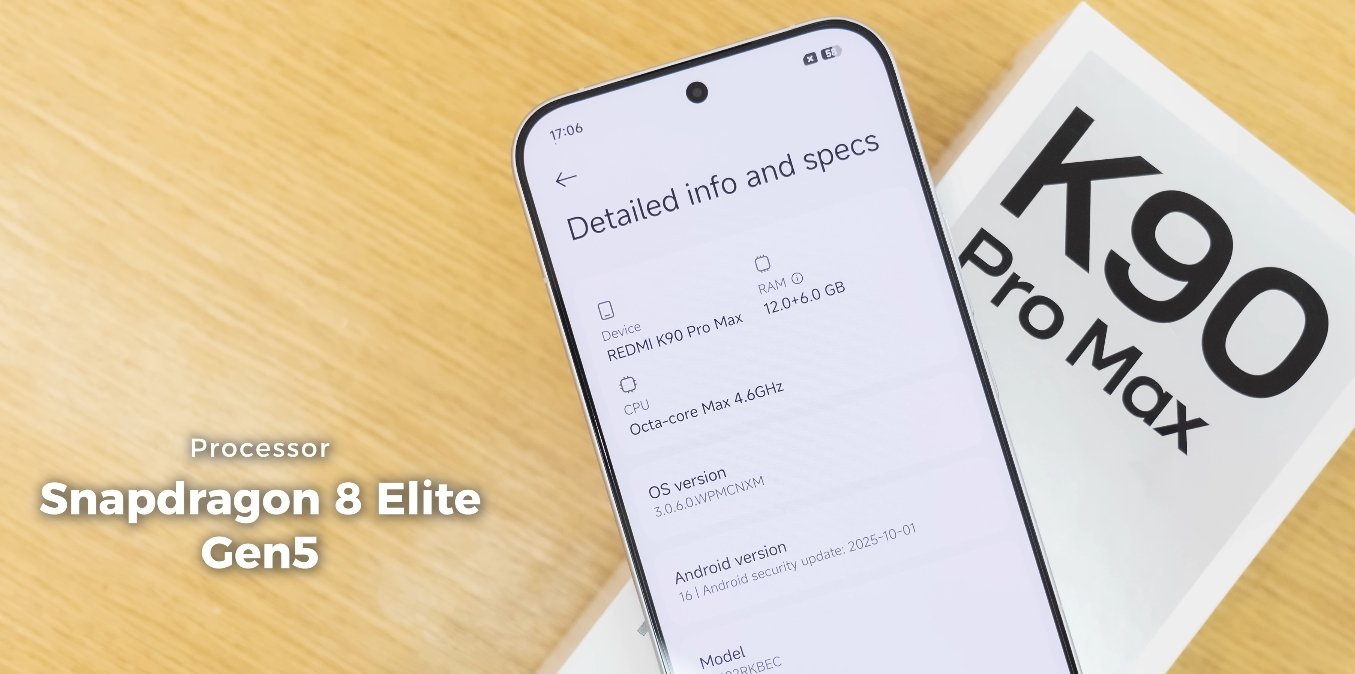Redmi K90 Pro Max poised to challenge UK flagship pricing with bold retail positioning
As speculation grows around the Redmi K90 Pro Max’s potential global debut, UK smartphone enthusiasts are already discussing how the device might fit into the local retail market. Based on Xiaomi’s pricing history and the phone’s aggressive feature list, it’s clear the K90 Pro Max would aim to disrupt the upper mid-range and affordable flagship space, offering premium-grade performance without crossing into the £900-plus tier.
In China, the Redmi K90 Pro Max launched at a surprisingly low price relative to its high-end specifications. When converted to pounds, the Chinese pricing equates to roughly under £600 for the base model, a figure that instantly catches attention in the UK market where premium phones often begin around £800. Even accounting for VAT, logistics, and local retailer markups, it’s realistic to expect a UK retail price in the £650–£700 range. This pricing would position the K90 Pro Max squarely against devices like the Google Pixel 8, Samsung Galaxy S24 FE, and OnePlus 12R, all of which represent the same “value flagship” segment.
The UK smartphone market is heavily influenced by brand recognition and carrier partnerships, both areas where Xiaomi has been steadily improving its presence. The Redmi brand, in particular, has been recognized for offering feature-packed phones that deliver above their price class. The K90 Pro Max continues that tradition, boasting a Snapdragon 8 Elite Gen 5 processor, a 7,560 mAh battery, a 6.9-inch 2K AMOLED display, and a periscope telephoto camera system. These specifications align it closely with flagship competitors that often cost hundreds more. For UK buyers accustomed to paying high prices for top-tier phones, such hardware under £700 could be a serious draw.

Retailers in the UK are likely to position the Redmi K90 Pro Max as a “flagship alternative” rather than a direct rival to Apple or Samsung’s premium lines. Online stores such as Currys, Argos, and Amazon UK may promote it as a high-performance model designed for tech-savvy buyers who want top specifications at a lower cost. Carriers could also show interest if Xiaomi pursues official certification for UK networks, as 5G support and compatibility would be crucial to winning over mainstream buyers.
Marketing for the K90 Pro Max in the UK would likely focus on the “more for less” message, highlighting how the device outperforms many £900 phones while costing substantially less. The bold battery size, high-refresh-rate screen, and photography setup are all key selling points that could make the phone a headline grabber. However, some skepticism might remain around software updates and long-term service support, areas where established brands like Apple and Samsung continue to hold a major advantage. Xiaomi’s recent improvements under HyperOS 3 and extended update promises might help alleviate some of those concerns among British consumers.
In terms of in-store placement, the K90 Pro Max would likely sit alongside other upper mid-range devices rather than ultra-premium flagships. Retail display sections in outlets such as John Lewis or Carphone Warehouse might feature it as a compelling alternative in the £600–£700 bracket, offering customers a chance to experience high-end design and power without exceeding their budgets. For online retail, Xiaomi’s own store and marketplaces like Amazon would play a central role, potentially offering early-bird discounts or bundle deals that include accessories such as cases or earbuds to sweeten the purchase.
The phone’s potential success in the UK could depend largely on how Xiaomi handles distribution and after-sales service. A strong warranty program, reliable local repair support, and official retail partnerships would be key to converting curiosity into sales. If Xiaomi ensures a seamless buying and servicing experience, the K90 Pro Max could become one of the most competitive options for buyers seeking a flagship experience without the flagship cost.
Overall, the Redmi K90 Pro Max looks set to enter the UK market as a disruptive force in 2025. By combining near-flagship hardware with a price point that undercuts traditional premium brands, it has the potential to attract budget-conscious professionals, students, and tech enthusiasts alike. Its success will hinge on Xiaomi’s ability to build confidence in the brand’s long-term reliability and software ecosystem. Should it launch around the projected £650–£700 mark, the K90 Pro Max could redefine what UK buyers expect from a high-end phone — proving once again that top performance doesn’t always require a top-tier price tag.
Also Read: Will the Redmi K90 Pro Max be officially available in the UK or only via grey import?

